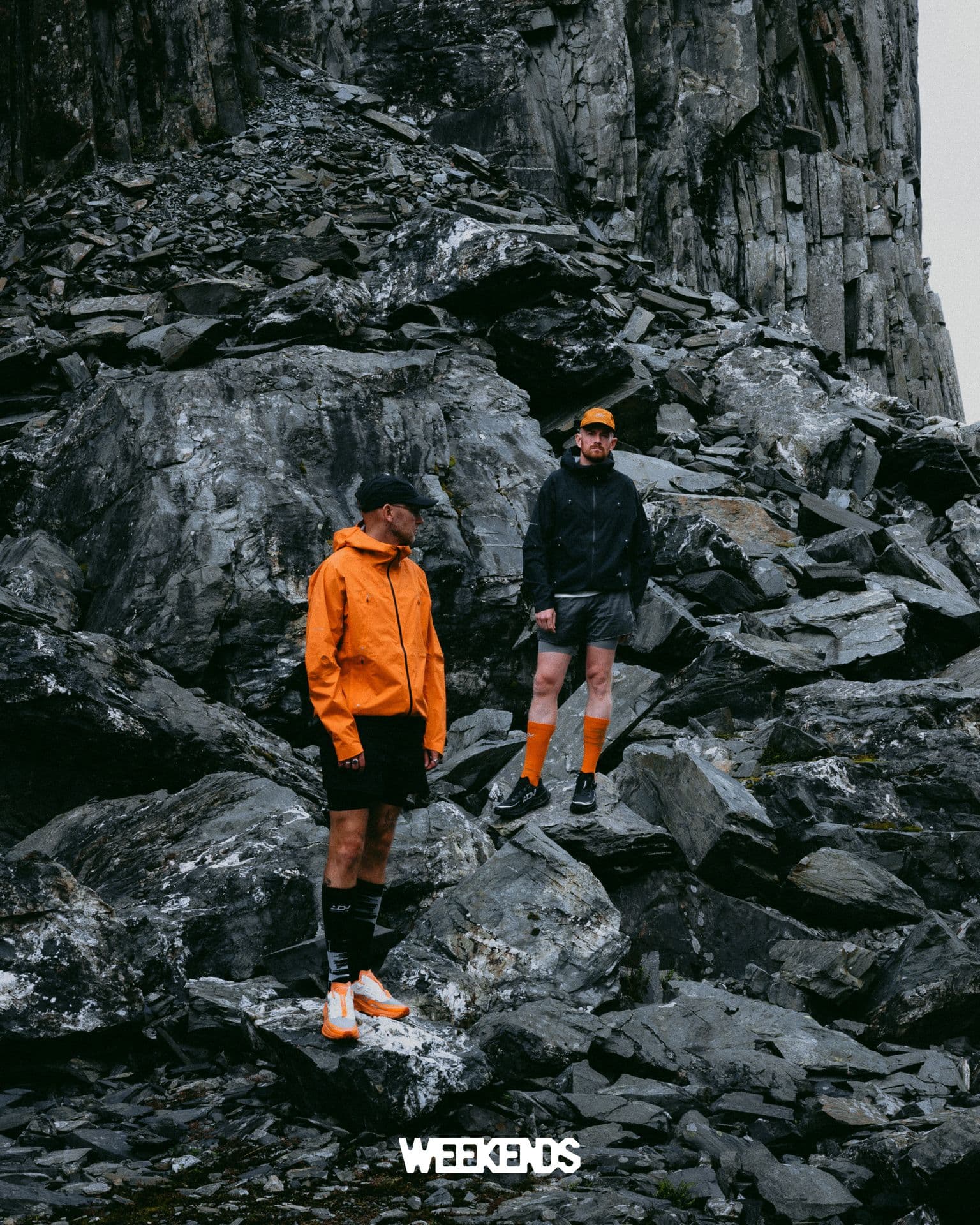
Outdoor Fabric Types Explained: Your Ultimate Guide to Choosing the Best Materials for Every Adventure
by Derek Siegel
The threads in your outdoor kit are the silent champions of comfort, performance, and lasting power on every expedition, whether you're scaling summits or wandering through urban landscapes. Picking the right material means getting a handle on how traits like toughness, breathability, waterproofing, warmth, and eco-friendliness team up to meet the challenges of your specific pursuit. This guide breaks down the key fabric characteristics, the perks of synthetic and natural fibers, clever hybrid innovations, recommendations tailored to different activities, and essential care tips.
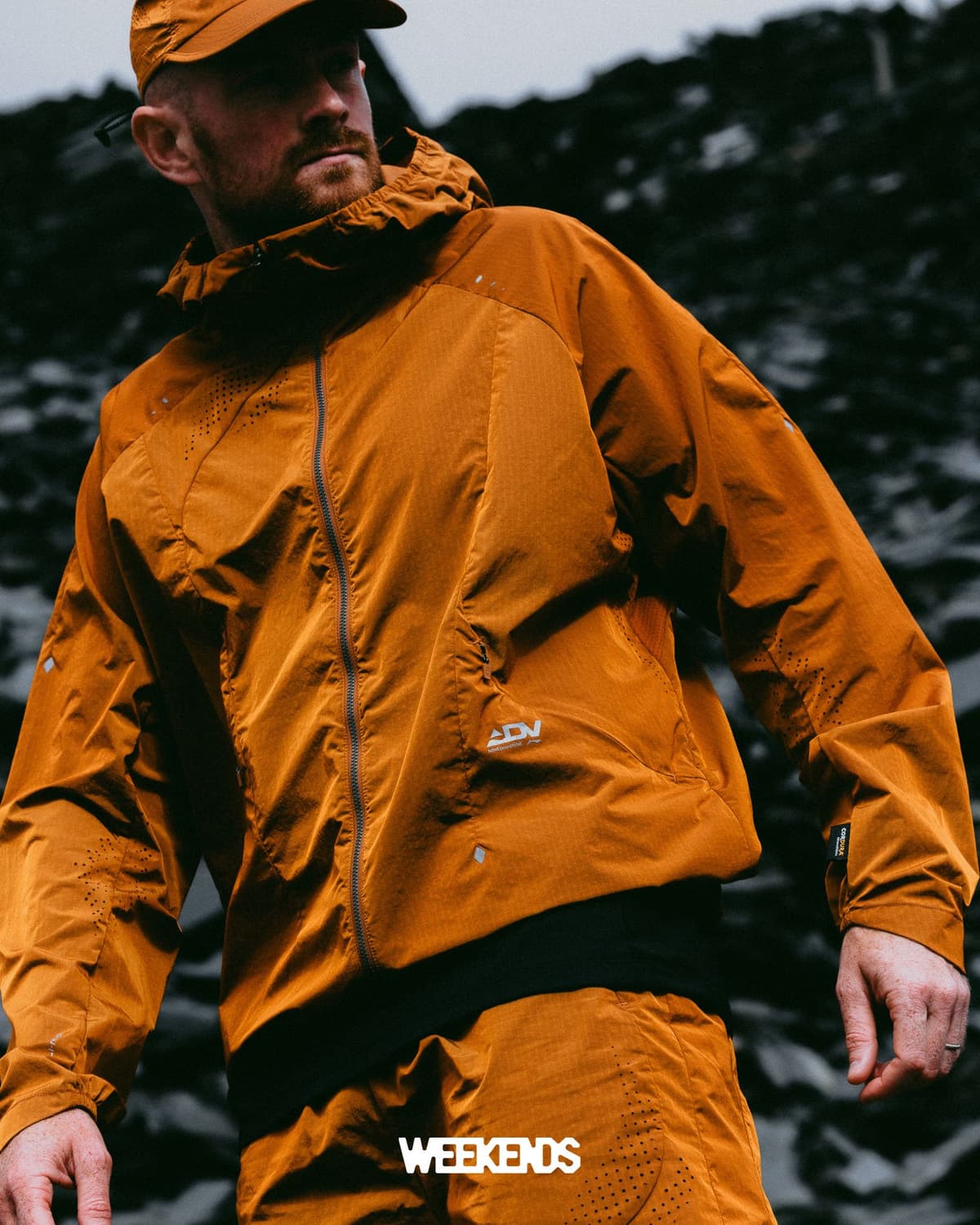
What Are the Key Properties of Outdoor Clothing Materials?
Outdoor fabrics are engineered to blend multiple essential properties—durability, moisture management, thermal regulation, and weather protection—creating textiles that perform reliably in unpredictable conditions. Durability means resistance to scrapes and tears, while breathability and moisture-wicking manage sweat vapor to keep you comfortable. Waterproofing and windproofing act as your shield against the elements, and insulation traps warmth through loft or trapped air. Sustainability is increasingly shaping fiber choices, with recycled and biodegradable options minimizing environmental impact. Understanding these properties is your foundation for selecting base layers, mid-layers, and outer shells perfectly suited to your adventure's demands.
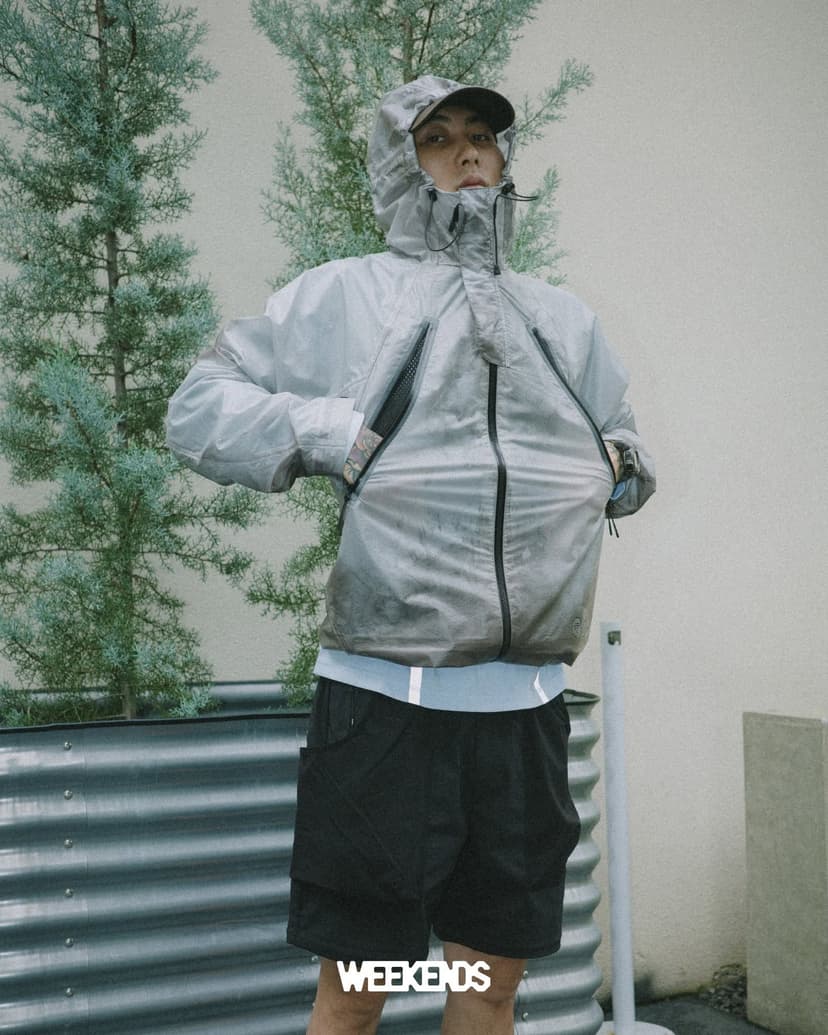
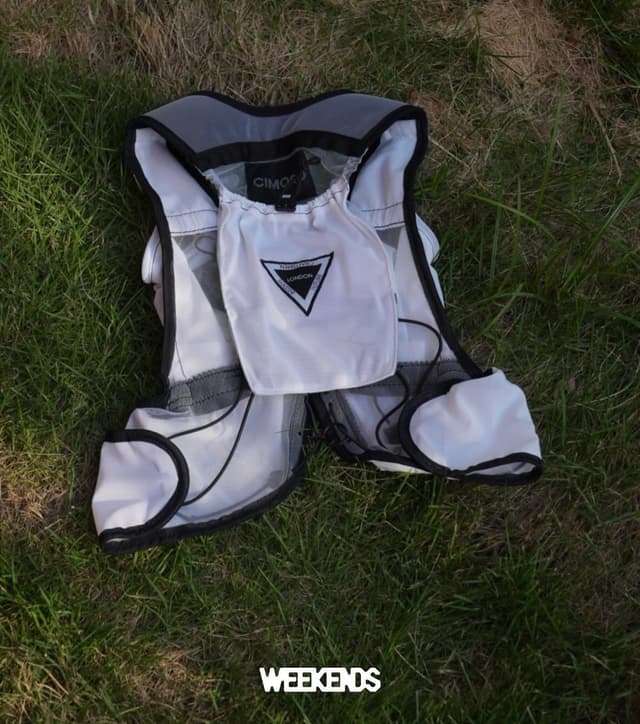
Which Fabric Attributes Affect Durability and Performance?
The toughness of outdoor fabrics comes down to fiber strength, how tightly they're woven, and clever reinforcement techniques. High-denier nylon and polyester offer exceptional resistance to abrasion, while ripstop weaves, with their grid-like reinforcement, prevent tears from spreading. Denier ratings tell you the thickness of the thread—higher numbers mean tougher textiles, ideal for backpacks, pants, and jackets that face rough terrain. Fabric finishes like polyurethane coatings boost tear strength and chemical resistance without adding significant weight. This inherent durability means less gear replacement and supports long-term use, making high-denier synthetics indispensable for demanding applications.
Here’s a look at common denier ratings and their typical uses:
- Backpack panels, lightweight jackets: Nylon Ripstop (70-210 Denier Range)
- Tent bodies, mid-layer shells: Polyester Weave (100-400 Denier Range)
- Heavy-duty packs, straps, luggage: Cordura® Nylon (500-1000 Denier Range)
No products available.
How Do Breathability and Moisture-Wicking Impact Comfort?
Breathability allows perspiration vapor to escape your body through the fabric's pores or membranes, preventing that clammy feeling during intense activity. Moisture-wicking fibers, like merino wool, polypropylene, and specially engineered polyesters, actively pull sweat away from your skin to the fabric's outer surface, where it can evaporate quickly. This dual action—vapor transmission combined with capillary action—helps regulate your microclimate temperature and reduces chafing. Without adequate breathability, moisture can build up inside, diminishing insulation and leading to chills in cold weather. Therefore, optimal moisture management is key to comfort, whether you're enjoying a leisurely camp or pushing your limits on a climb.
What Role Does Waterproofing and Windproofing Play in Outdoor Fabrics?
Waterproof and windproof fabrics shield you from rain, snow, and biting winds by combining tough outer layers with laminated or coated membranes. Advanced membranes, such as PTFE (like Gore-Tex) and proprietary polyurethane films, block liquid water while still allowing vapor to escape. Seam sealing and durable water-repellent (DWR) finishes prevent the fabric from becoming saturated, ensuring breathability is maintained. Windproof weaves and microporous barriers stop heat from escaping due to wind, keeping your core warm. Together, these features create a protective microclimate that keeps you dry and shielded, which is absolutely essential in unpredictable mountain and coastal environments.
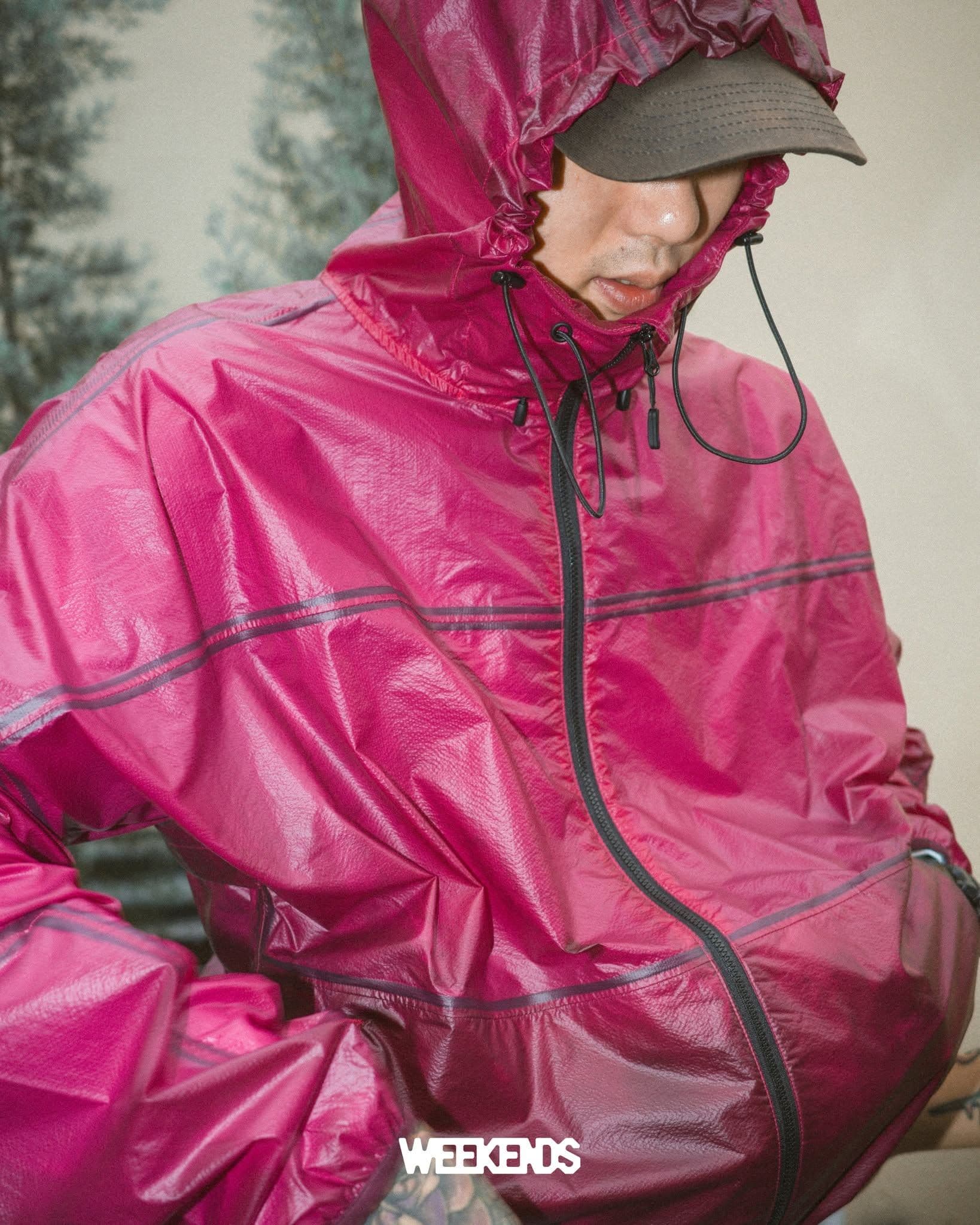
Research highlights that DWR finishes are vital for keeping outdoor apparel water-resistant and stain-repellent, though the environmental impact of certain chemicals is driving the search for more sustainable alternatives.
Durable Water Repellent (DWR) Finishes in Outdoor Apparel: Sustainability and Performance a polymeric emulsion is applied as a durable water repellent (DWR) to the textile surface. The application of DWRs is a key finishing process for outdoor apparel, providing water resistance and stain repellency. However, the environmental impact of some DWR chemicals, particularly per- and polyfluoroalkyl substances (PFAS), has led to increased scrutiny and a shift towards more sustainable alternatives.
Why Is Insulation Important and How Do Materials Provide Warmth?
Insulation materials work by trapping your body heat, creating air pockets that slow down heat loss through convection and conduction. Natural down offers an unparalleled warmth-to-weight ratio thanks to its high fill power clusters, but it can lose its loft in wet conditions. Synthetic insulations, like PrimaLoft and PrimaLoft® Gold, maintain their insulating power even when damp, using engineered fiber crimps to mimic down's air-trapping capabilities. Mid-layer fleeces use knit structures to hold air, while high-loft synthetic jackets balance compressibility with thermal retention. Effective layering combines base layers, insulating mid-layers, and protective shells to adapt your warmth to your activity level and the weather.
No products available.
How Does Sustainability Influence Outdoor Fabric Choices?
Sustainability is steering fabric innovation towards recycled and renewable fibers, PFC-free DWR coatings, and biodegradable options. Recycled polyester (rPET) reduces the need for virgin materials by repurposing post-consumer plastics, saving energy and cutting CO₂ emissions. Natural fibers such as hemp, linen, and bamboo grow with minimal pesticide and water use, offering breathable, durable alternatives. Brands featured on weekends.world are committed to PFC-free finishes, sourcing bluesign®-approved textiles, and embracing circular design principles. This eco-conscious shift aligns performance needs with environmental responsibility, supporting both responsible trail use and the health of our planet.The effectiveness and longevity of water-repellent finishes, including newer PFC-free versions, are significantly affected by washing and wear, making careful maintenance crucial for preserving performance.
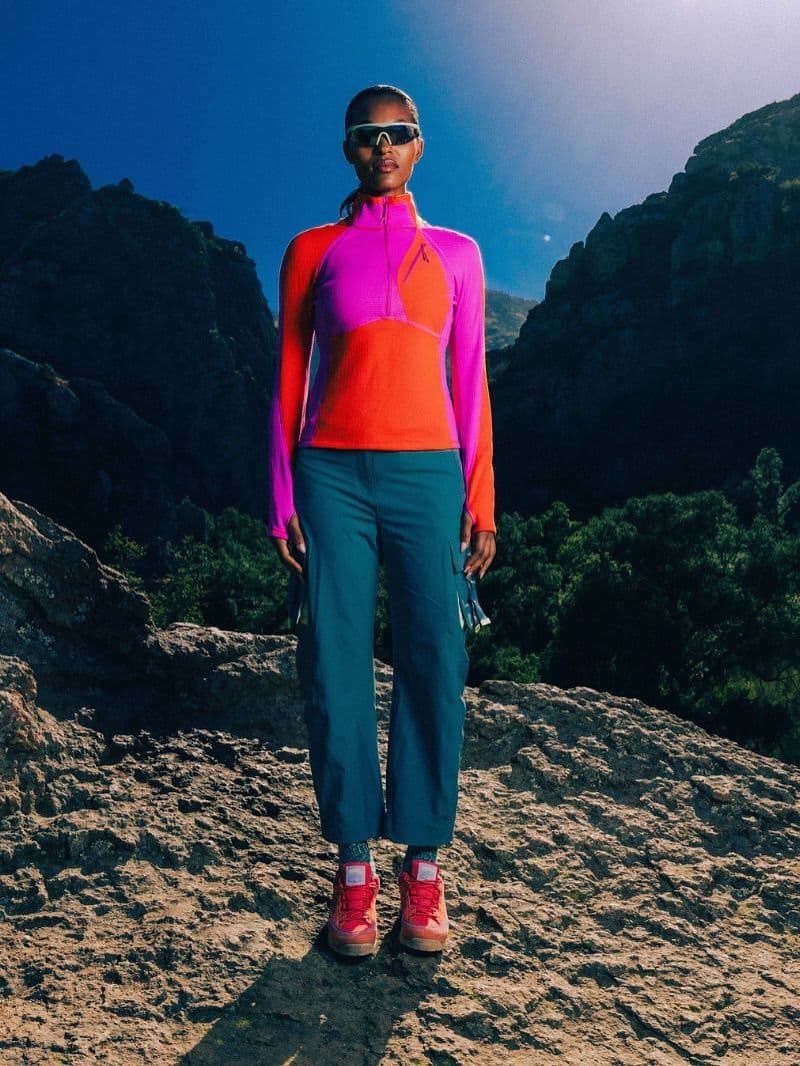
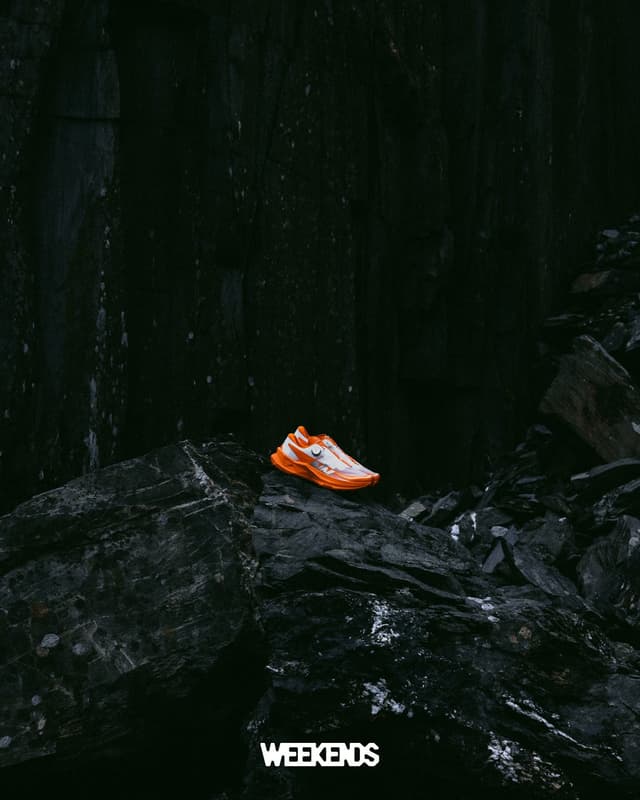
Water Repellent Finishes on Functional Clothing: Durability and Performance After Washing The aim of the research was to evaluate the changes in the surface properties of five functional clothing materials with water-repellent finishes (including PFC-free finish) after 1, 5, and 10 washes with three detergents. A new approach to the interpretation of the water-repellent properties of textile materials is presented, based on two techniques, i.e., the spray test method and contact angle measurements. The results showed that washing materials with hydrophobic finishes can cause significant changes in their properties, which are mainly dependent on the composition and structure of the material, as well as the type of hydrophobic finish. The PFC-free finish is the least resistant to washing. For all materials with PFC finishes, the water repellency depends on the fluorine content on the surface and fabric topography. It was also found that increasing washing frequency resulted in a gradual decrease in water repellency.
What Are the Main Synthetic Outdoor Fabrics and Their Benefits?
Synthetic fabrics engineered for the outdoors combine resilience, quick-drying capabilities, and specialized performance enhancements. Nylon offers superior abrasion resistance for high-wear zones, while polyester provides excellent UV stability and rapid moisture transport. Spandex adds crucial stretch for unrestricted movement in athletic wear, and polypropylene excels at managing moisture right next to your skin. Waterproof-breathable membranes like Gore-Tex, along with alternatives such as eVent and Sympatex, integrate seamlessly with synthetic shells to deliver reliable protection from the elements. These advanced textiles form the foundation of modern performance gear.
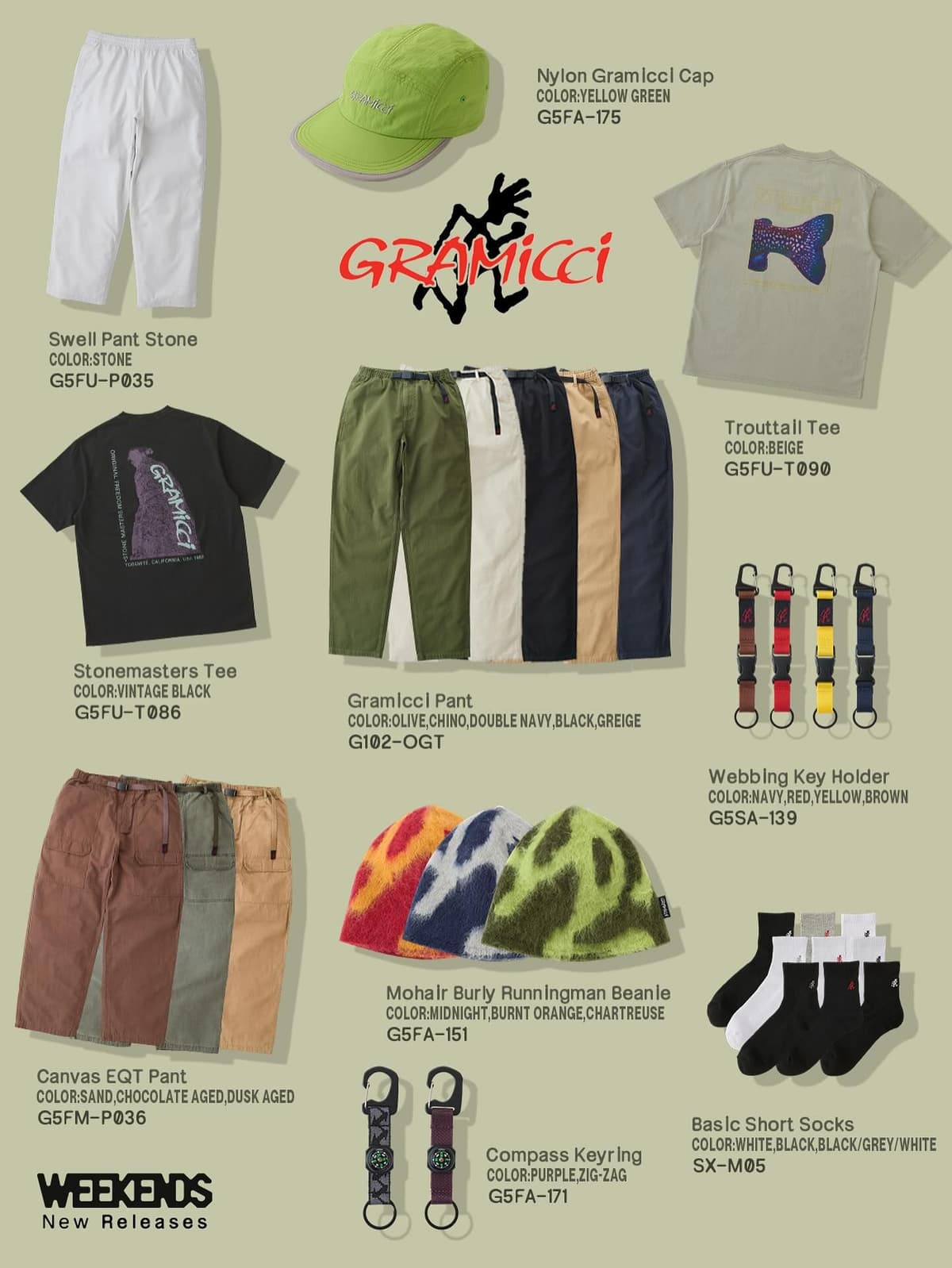
What Makes Nylon a Durable Choice for Outdoor Gear?
Nylon's exceptional tensile strength and resistance to abrasion stem from its polyamide molecular structure and tightly woven filaments. Denier ratings typically ranging from 70 to 210 are ideal for everything from lightweight pack fabrics to reinforced ripstop panels on jackets. Nylon absorbs very little moisture and boasts high tensile toughness, ensuring your gear maintains its shape and performance under stress. Impregnated PU coatings or nylon-based laminates further enhance water resistance and tear strength, extending the life of your gear in harsh conditions and under heavy loads.
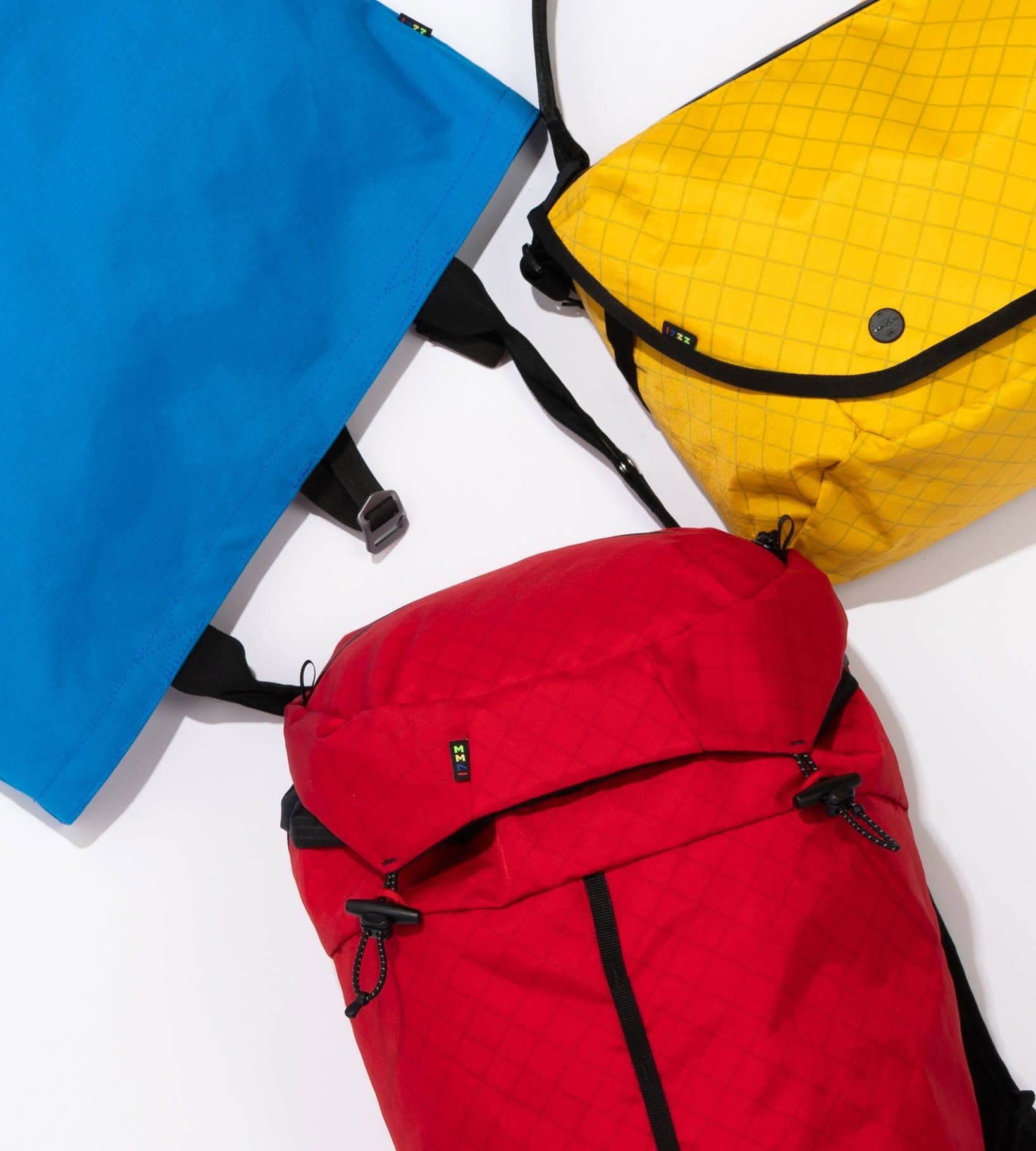
How Does Polyester Offer Versatility and Quick-Drying Performance?
Polyester's hydrophobic fibers naturally repel water, promoting fast moisture transport and evaporation. UV-stabilized versions are designed to resist degradation from sunlight, making polyester a durable choice for bright, high-altitude environments. Knit fleeces utilize polyester's crimped structure for insulation and loft, while woven polyesters serve effectively as outer shells and mid-layers. Polyester retains its tensile strength even when wet and dries quickly after exposure, making it ideal for multi-day treks where gear needs to perform reliably, wet or dry, without holding onto odors.
No products available.
What Are the Uses of Spandex and Polypropylene in Outdoor Clothing?
Spandex (also known as elastane) is integrated into active wear to provide stretch, allowing for dynamic movement and a secure fit in climbing and running apparel. Even in small percentages (5–10%), spandex significantly enhances comfort and prevents garment fatigue. Polypropylene's hydrophobic, microporous structure is exceptionally good at drawing moisture away from the skin, making it perfect for base layers in cold, high-perspiration activities. Its low thermal conductivity helps retain warmth when damp, and the fiber's lightweight nature minimizes bulk in layered outfits.
How Do Waterproof Breathable Membranes Like Gore-Tex Work?
Gore-Tex membranes are composed of expanded PTFE layers containing billions of microscopic pores. These pores are too small for liquid water droplets to pass through but large enough for water vapor molecules to escape. When laminated between face fabrics and linings, this membrane provides high waterproof ratings (up to 28,000 mm H₂O) while maintaining excellent breathability (up to 20,000 g/m²/24 h moisture vapor transmission). Seam sealing and durable water-repellent finishes are crucial for maintaining the membrane's function by shedding surface water and preventing the fabric from becoming saturated.The creation of waterproof and breathable sportswear involves sophisticated textile engineering, with ongoing innovations focused on improving moisture transport and integrating smart technologies for enhanced comfort during activity.
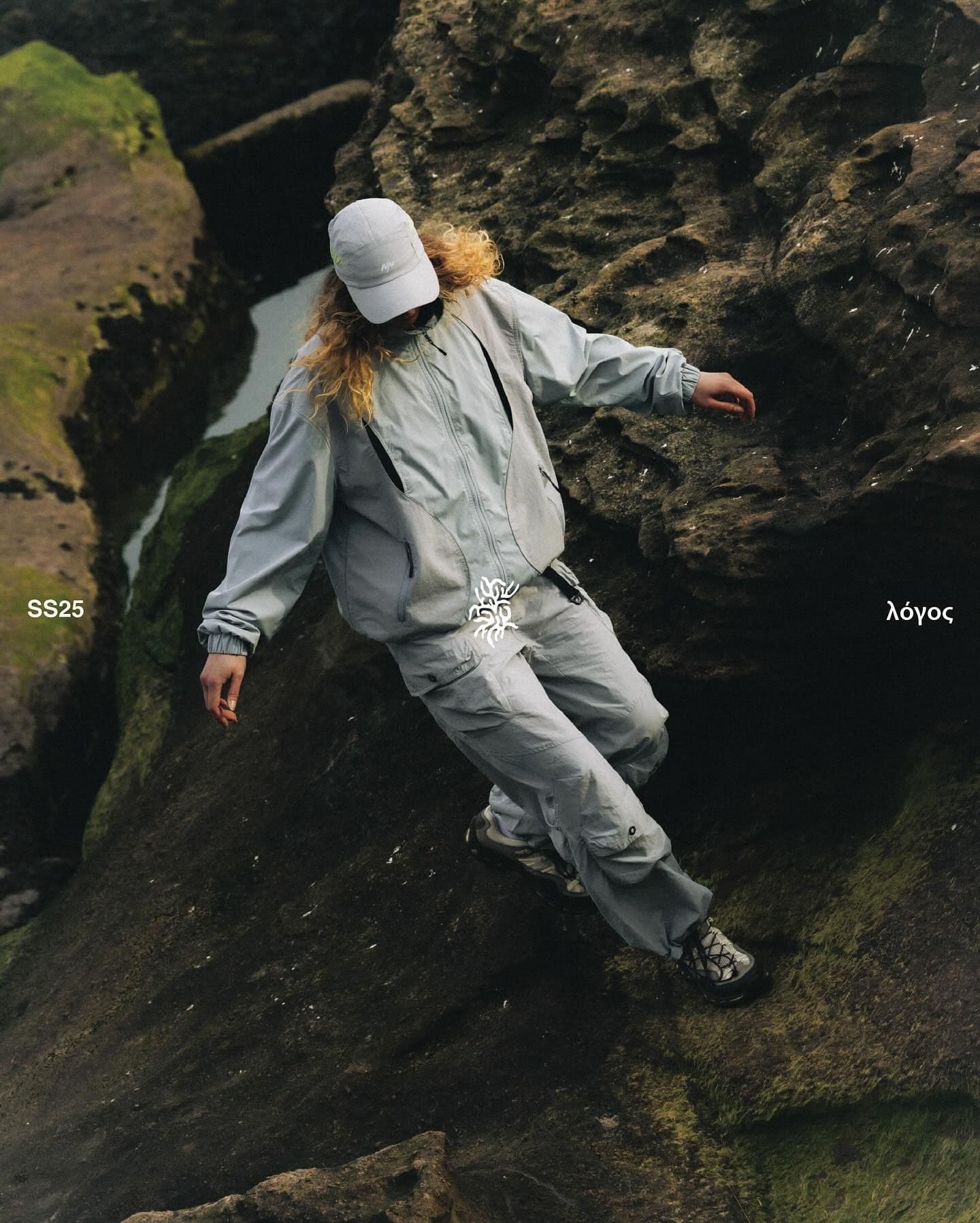
No products available.
Waterproof and Breathable Sportswear: Innovations in Smart Textile Technology This paper reviews the various works done in the development of waterproof, breathable sportswear. The moisture transport properties and various factors affecting it, in the sportswear fabrics are also discussed. More on that, the limitations of conventional waterproof breathable fabrics are overcome by redesigning the textile material surface, operating at a microscopic level using stimuli-responsive polymers (SRPs), phase change materials (PCMs), Shape Memory Polymers (SMPs) etc., in the form of smart technology that facilitates active comfort to the wearer is also discussed. Special functionality imparted in sportswear by incorporating smart material in the form of smart coatings is also presented.
What Are the Advantages of eVent and Sympatex Fabrics?
eVent utilizes a direct-venting membrane that rapidly expels vapor through its microscopic pores without needing a polyurethane coating, offering immediate breathability during exertion. Sympatex employs a hydrophilic membrane that actively moves moisture molecules through the barrier via molecular diffusion, ensuring waterproof performance and greater environmental compliance through its PFC-free chemistry. Both of these alternatives provide high levels of protection while meeting the demand for sustainable finishes.
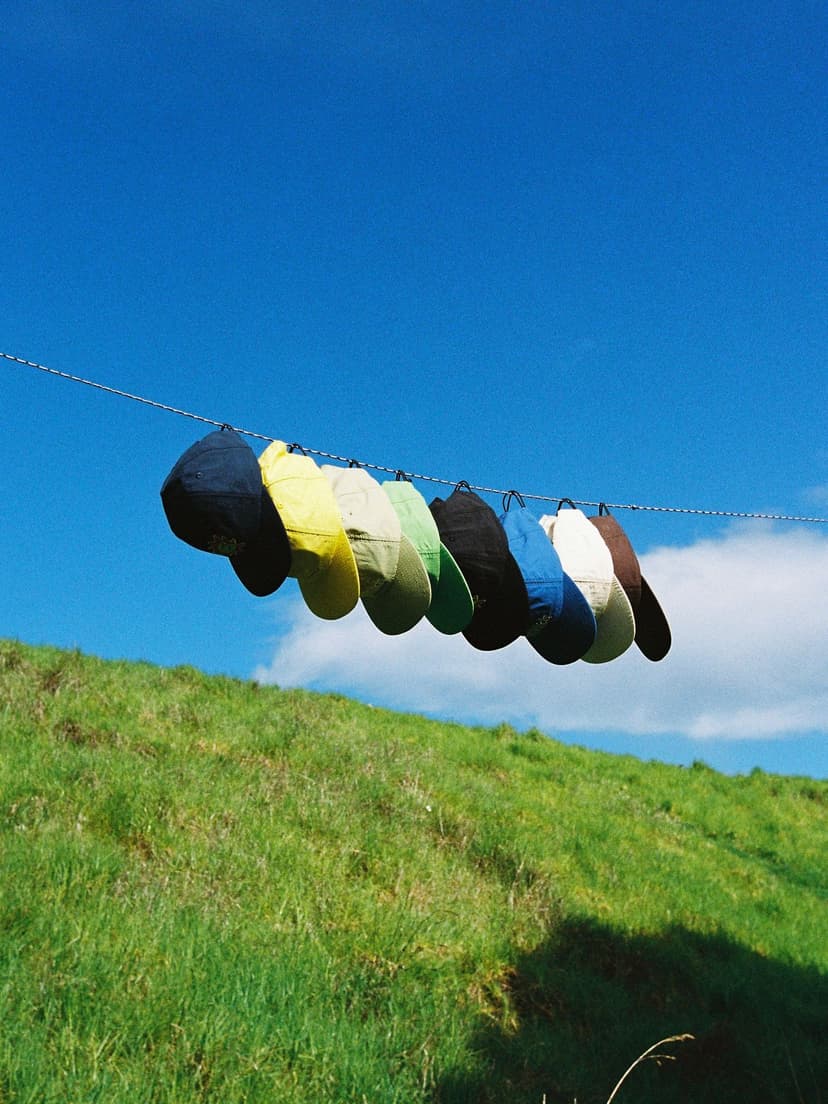
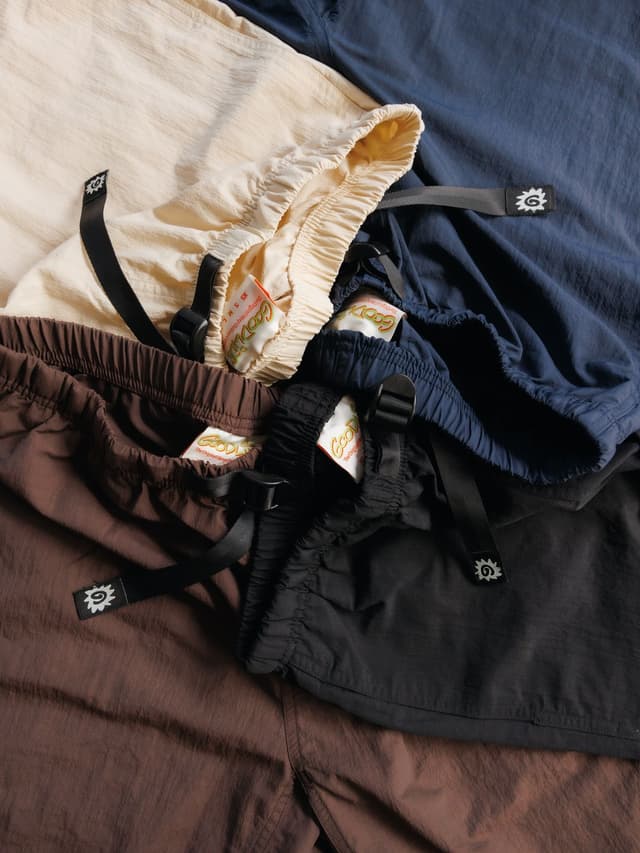
How Do Natural Outdoor Fabrics Compare and What Are Their Benefits?
Natural fibers bring unique comfort and eco-friendly credentials to outdoor apparel. Merino wool stands out for its excellent temperature regulation and natural odor resistance, while down insulation offers superior warmth for its weight in dry conditions. Emerging fibers like hemp, linen, and bamboo are integrating sustainability goals with functional performance. However, traditional cotton tends to hold moisture and loses its insulating properties when wet, making it less suitable for most high-performance scenarios.
No products available.
Why Is Merino Wool Considered the All-Season Outdoor Fabric?
Merino wool's fine, scaly fibers trap air effectively for insulation while allowing moisture vapor to pass through its hydrophilic protein structure. It can absorb up to 30 percent of its weight in moisture without feeling damp, releasing vapor gradually to prevent chills. Its natural odor resistance comes from antimicrobial amino acids, making merino an excellent choice for multi-day trips. Lightweight knit constructions adapt well to base and mid-layer roles, balancing softness with thermal regulation across a wide range of climates.
What Are the Pros and Cons of Down Insulation?
Down clusters create lofty air pockets that provide exceptional warmth with minimal weight—fill powers typically range from 550 to 900+. Higher fill power means greater loft and compressibility, which is ideal for alpine and backpacking insulation. The main drawback is that down loses its loft when wet unless treated with water-resistant coatings, and its performance relies on responsible sourcing (like RDS certification). Synthetic alternatives can maintain their loft when damp but are generally heavier, highlighting the trade-offs between weight, packability, and performance in wet weather.
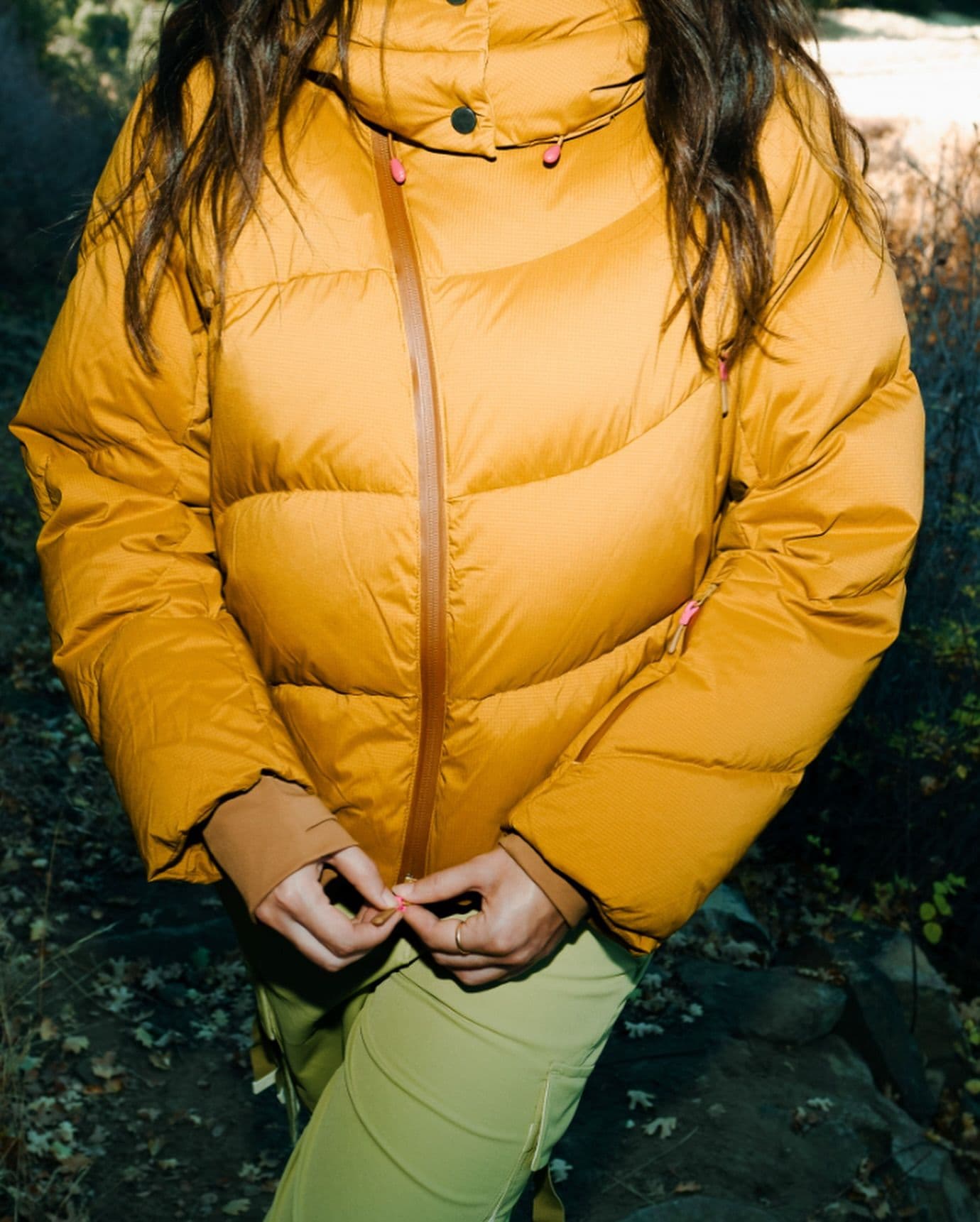
How Are Hemp, Linen, and Bamboo Emerging as Sustainable Choices?
Hemp fibers grow with minimal water and pesticide use, yielding durable fabrics with natural resistance to UV rays and mildew. Linen, derived from flax fibers, wicks moisture effectively and softens with age, offering comfort and breathability in cooler weather. Bamboo viscose creates soft, breathable textiles with high moisture absorption, although the sustainability of its processing methods can vary. These renewable fibers are enriching the natural fabric options and supporting the eco-conscious product lines featured on weekends.world.
No products available.
Why Is Cotton Generally Not Recommended for Outdoor Activities?
Cotton's hydrophilic cellulose structure readily absorbs moisture and dries very slowly, leading to prolonged dampness against the skin. When saturated, cotton loses its insulating capacity, accelerating heat loss in cool conditions and causing significant discomfort. While comfortable for casual wear, cotton's tendency to retain moisture and gain weight when wet makes it a poor choice for performance environments where moisture management and thermal stability are critical.


What Are Hybrid and Specialized Outdoor Fabrics and When Should You Choose Them?
Hybrid and specialized fabrics ingeniously combine the strengths of different fibers to deliver precisely tailored performance. Blends of natural and synthetic fibers leverage the best of both worlds: comfort, moisture management, and durability. Softshell fabrics integrate stretch and abrasion resistance with moderate water and wind protection, while hardshells prioritize maximum weatherproofing. Innovations like recycled materials and PFC-free durable water-repellent finishes are enhancing sustainability without compromising performance.
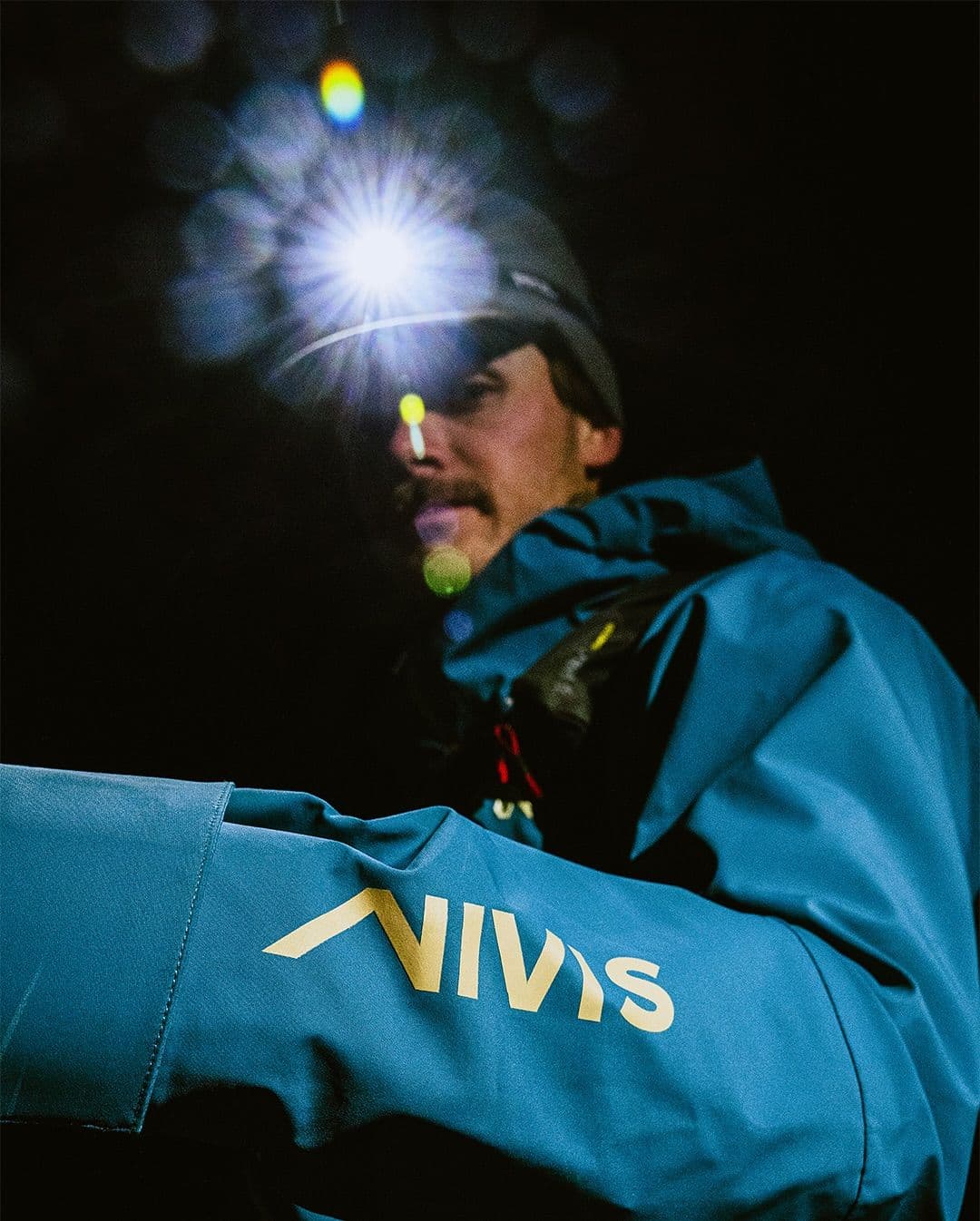
How Do Softshell and Hardshell Fabrics Differ in Outdoor Use?
Softshell textiles typically feature woven face fabrics paired with fleece backings or highly stretchy knits, offering breathability, flexibility, and robust abrasion resistance for high-energy activities. They usually come with water-resistant DWR finishes rather than full membrane laminates, trading off heavy-duty protection for enhanced comfort and mobility. Hardshell fabrics, on the other hand, incorporate laminated membranes like Gore-Tex Pro or Sympatex, combined with durable weaves to create completely waterproof and windproof barriers. This makes hardshells indispensable for extended periods exposed to rain, snow, and extreme winds.
- Softshell: Water-resistant only, high-stretch, best for ski touring, fast-paced hikes, alpine approaches
- Hardshell: Fully waterproof, moderate flexibility, best for rain jackets, expedition shells, storm conditions
Softshells maximize comfort during activity through their stretch and breathability, naturally leading into a discussion about blended fabrics that merge various performance attributes.
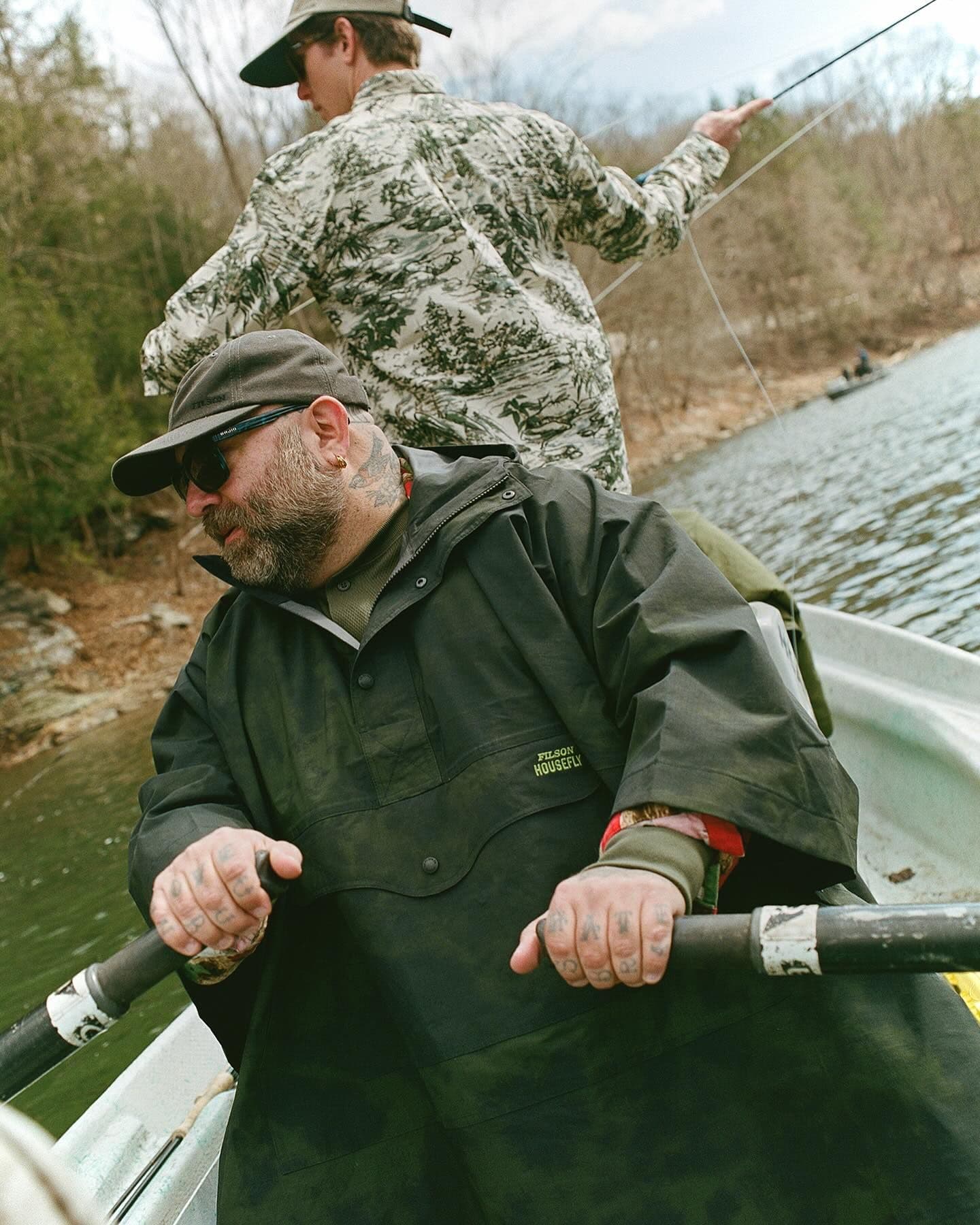
What Are the Benefits of Blended Fabrics Combining Natural and Synthetic Fibers?
Blends like merino-polyester knits combine wool's odor resistance and thermal regulation with polyester's durability, quick-drying properties, and UV stability. Similarly, natural linen blended with recycled nylon offers increased strength and reduced wrinkling while retaining linen's cool-weather comfort. These hybrid fabrics optimize weight, performance, and wear life, delivering a balanced textile profile that outperforms single-fiber constructions in many conditions.
How Are Recycled and PFC-Free DWR Fabrics Shaping Sustainable Outdoor Gear?
Recycled polyester fabrics incorporate post-consumer content into high-performance textiles, significantly reducing their carbon footprints and diverting waste from landfills. PFC-free DWR treatments, based on silicone or fluorine-free chemistries, effectively repel water while eliminating persistent environmental pollutants. Innovative brands like Houdini Sportswear and Patagonia feature these finishes in their jackets and shells, proving that sustainable gear doesn't have to sacrifice durability or weather protection.
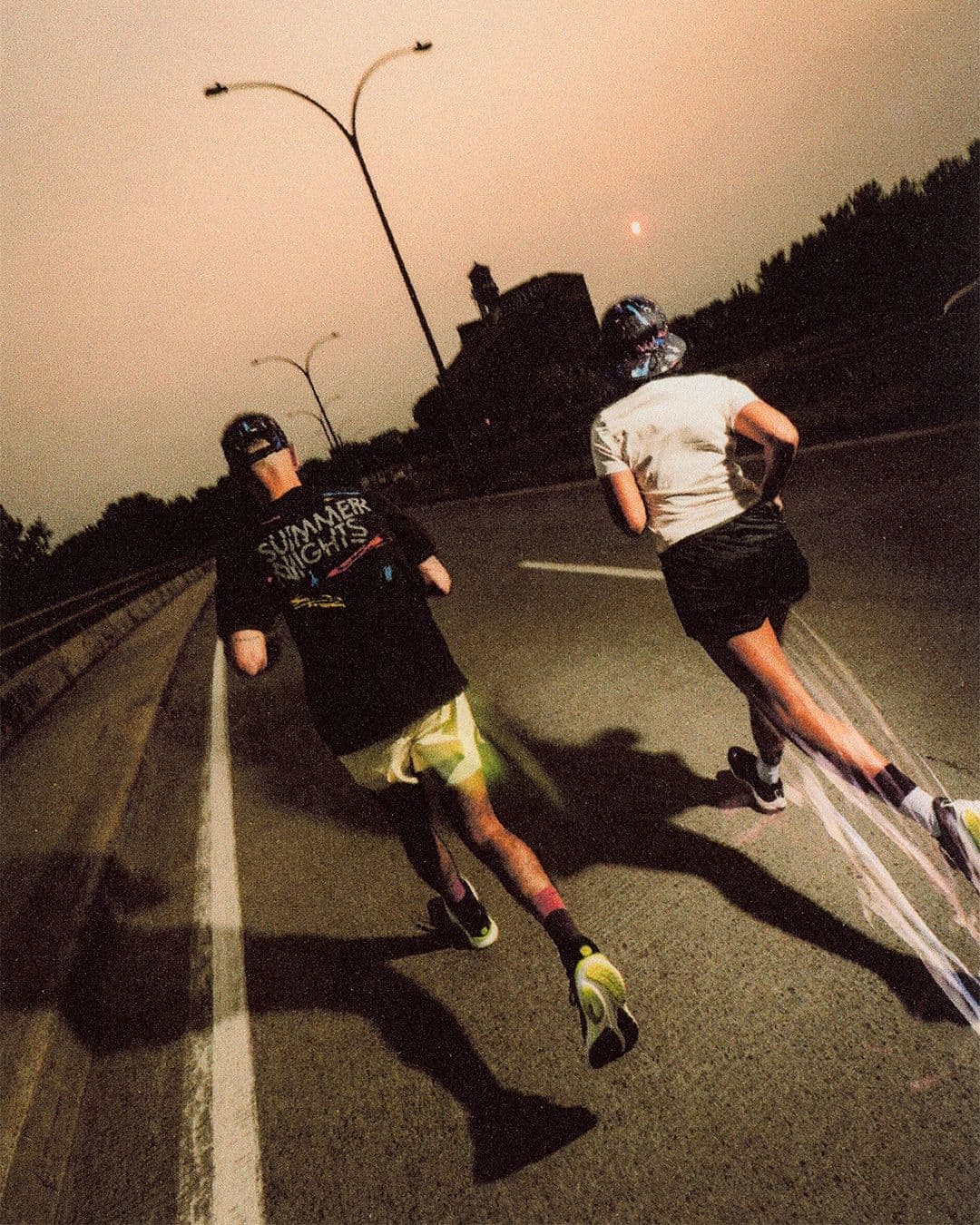
How Do You Choose the Right Outdoor Fabric for Specific Activities?
Selecting materials based on your activity ensures your gear is perfectly suited to the intensity, exposure, and environmental demands of each pursuit. Hiking and backpacking require abrasion-resistant shells and moisture-wicking base layers; climbing emphasizes stretch and reinforcement at key contact points; skiing demands insulating membranes with high waterproof ratings. Climate and weather conditions should further refine your choices, balancing breathability in hot weather against thermal retention and weatherproofing in cold or wet environments.
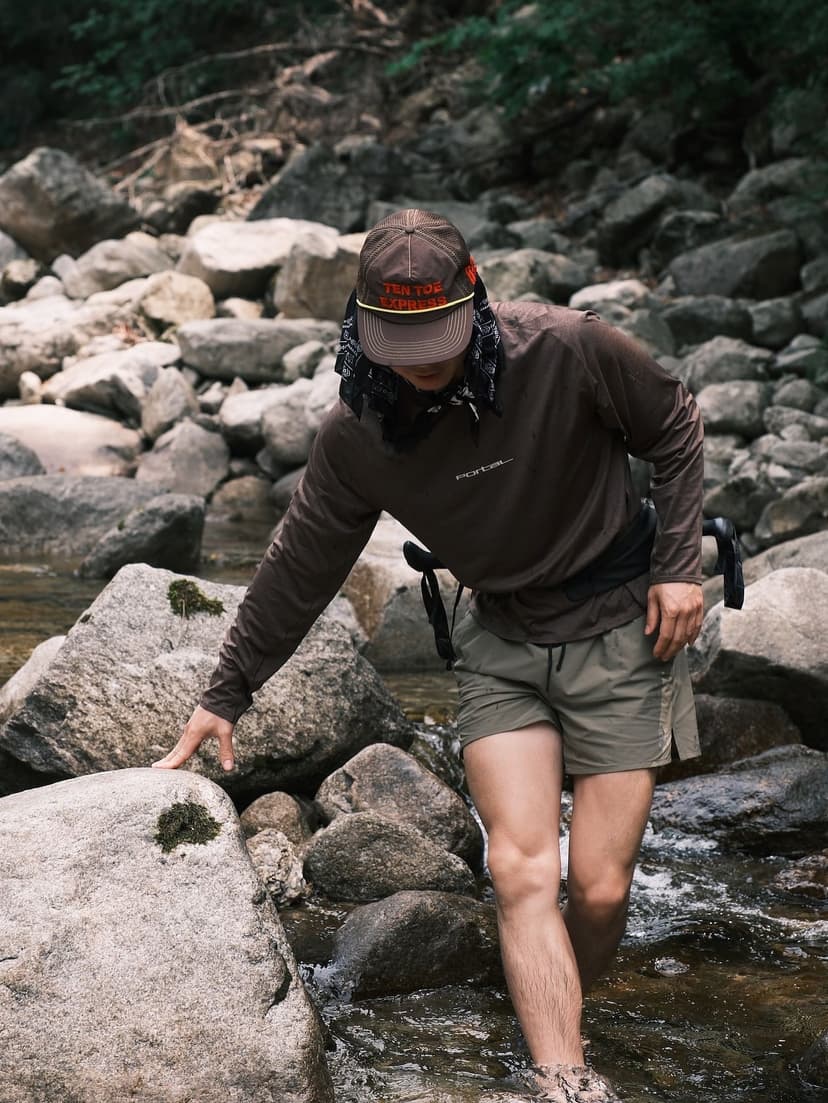
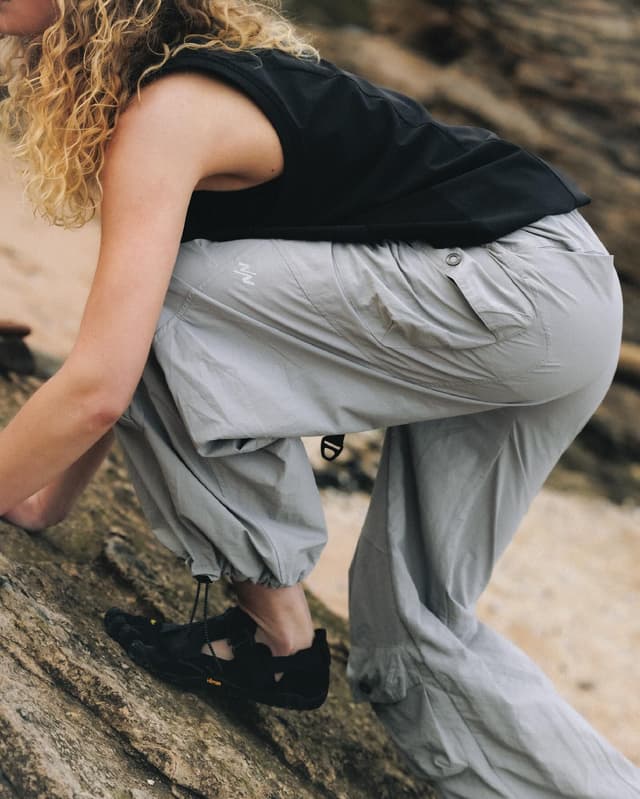
Which Materials Are Best for Hiking and Backpacking?
For multi-day treks, durable nylon ripstop shells provide protection against rough terrain, while breathable membranes offer reliable defense against rain. Merino wool base layers help manage sweat, and synthetic insulation jackets keep you warm even when damp. Lightweight polyester mid-layers and windproof softshell pants strike a balance between weight and protection for varied elevations, ensuring you remain comfortable and agile on long trail segments.
What Fabrics Suit Climbing and High-Performance Sports?
Climbing apparel prioritizes stretch, durability, and abrasion resistance. Blended nylon-spandex weaves allow for dynamic movements while resisting wear from rock surfaces. Reinforced panels made from Cordura® or high-denier nylon in critical contact areas extend the lifespan of your garments. Moisture-wicking synthetic base layers manage sweat effectively under harnesses, and technical softshell jackets offer wind resistance without restricting grip or flexibility.
No products available.
Which Materials Provide Optimal Warmth and Protection for Skiing and Winter Sports?
Ski shells require robust waterproof membranes with high hydrostatic head ratings (≥20,000 mm) and sealed seams to prevent snow from getting in. Insulated mid-layers utilize high-loft synthetic fills or down treated with hydrophobic coatings. Base layers combine merino or polypropylene for moisture management and next-to-skin comfort. Windproof softshell pants with a fleece backing help regulate temperature during variable lift rides and on-slope exertions.
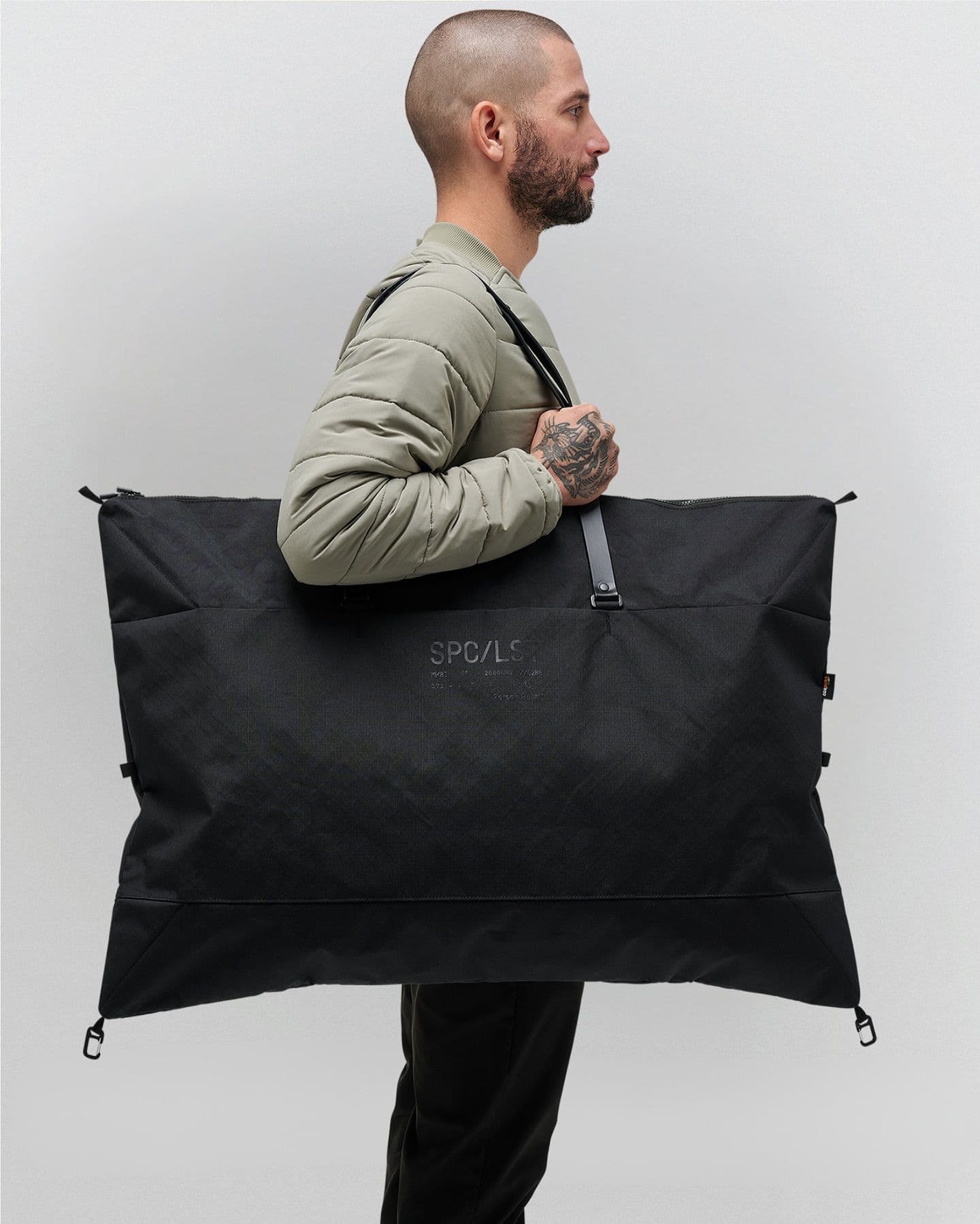
How Do Weather and Climate Influence Fabric Choice?
In hot, humid climates, highly breathable, moisture-wicking fabrics like linen blends and lightweight polyester meshes are excellent for promoting evaporative cooling. Arid, high-altitude environments benefit from windproof softshells paired with insulating mid-layers that can be easily removed as temperatures rise. In cold, wet regions, fully waterproof hardshells and quick-drying synthetic layers are essential to prevent heat loss and moisture buildup, ensuring safety and comfort in challenging conditions.
What Are the Latest Trends and Innovations in Outdoor Clothing Materials?
The outdoor industry is constantly evolving, driven by sustainability goals and increasing performance demands. Recycled polyester and bio-based fibers are becoming more common in shells and insulation, while synthetic insulation technologies like Primaloft® Gold Eco offer warmth comparable to down, even when wet. PFC-free DWR coatings are rapidly becoming the industry standard, and natural fiber hybrids—such as merino-Tencel blends—are enhancing comfort and moisture management. Advances in nanotechnology are leading to engineered membranes with ultra-thin profiles, maximizing breathability and weather protection without adding bulk.
No products available.
How Are Brands Using Recycled Polyester and Sustainable Fibers?
Leading brands are incorporating post-consumer rPET into shells, linings, and mid-layers, significantly reducing their carbon footprints and diverting waste from landfills. Patagonia's recycled fleece and Houdini Sportswear's RPET shell fabrics are prime examples of how recycled fibers can match or even surpass the performance of virgin polyester. Hemp-linen denim for urban adventurers and bamboo-lyocell blends in base layers highlight the growing trend towards renewable, low-impact textiles.


What Advances Are Being Made in Synthetic Insulation Technologies?
Next-generation synthetic insulations utilize engineered fiber structures to mimic down's compressibility and warmth while retaining loft even when wet. Innovative cluster designs employ hollow fibers and varied denier profiles to trap air efficiently, reduce pack volume, and enhance durability. Eco-friendly lines are increasingly using recycled feedstocks and biodegradable binder chemistries, aligning top-tier performance with sustainability objectives.
Why Are PFC-Free DWR Coatings Becoming the New Standard?
PFC-free water repellents replace persistent fluorochemicals with alternatives based on silicone or hydrocarbons that effectively shed rain without posing long-term environmental risks. These treatments comply with stringent global chemical regulations while maintaining excellent surface tension and durability. Brands that adopt PFC-free finishes are demonstrating leadership in environmental stewardship and responding to consumer demand for healthier, more sustainable materials.

No products available.
How Is Merino Wool Being Enhanced with New Blends Like Tencel?
Blending merino wool with Tencel® (lyocell) combines wool's natural thermal regulation and odor control with Tencel's smooth feel, superior moisture transfer, and minimal shrinkage. This synergy results in base layers that dry faster, resist pilling, and offer enhanced next-to-skin comfort. The outcome is an elevated natural fiber performance profile that strongly appeals to eco-conscious outdoor enthusiasts. Whether you're embarking on a backcountry trek, tackling a winter ascent, or navigating city streets in the rain and chill, understanding outdoor clothing material types empowers you to choose gear that perfectly matches your adventure's demands.
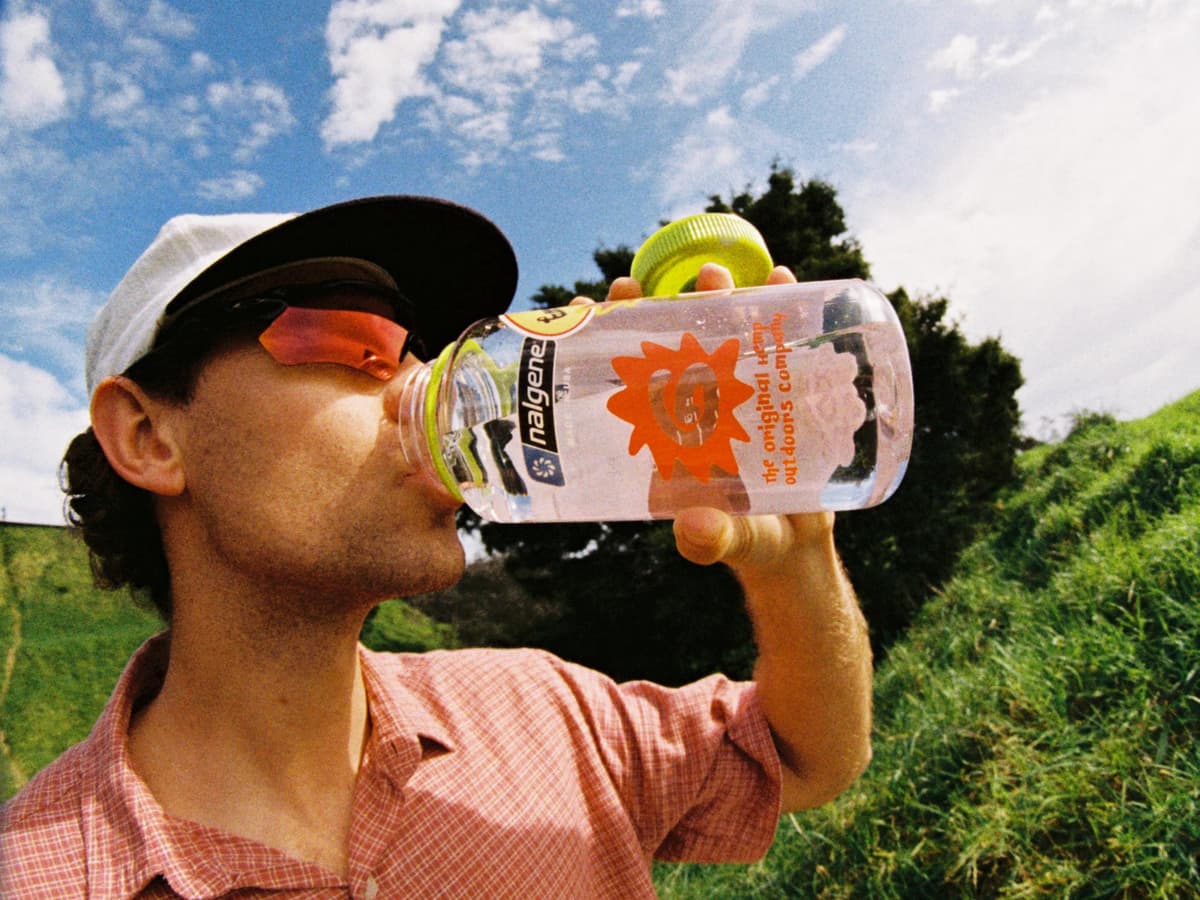
With this knowledge, you can confidently explore the curated selection of high-quality apparel and gear at WEEKENDS, join our vibrant community of outdoor enthusiasts, and elevate every outing with precisely tailored fabrics. Enjoy the journey—and the gear that carries you there.